
“I assure you, the ill omens and legends surrounding the Noctis Cluster have no origin beyond the idle ravings of drunken voidsmen, and no more basis in reality than any other such tale. I have acquired charts of an infallible Warp route to the heart of the Cluster, and shall be following a more reliable trail than these foolish legends to the treasures that others are too craven to seek.” –Last recorded statement of Lord-Captain Obadiah Cal (current whereabouts unknown)
In September, Fantasy Flight Games announced the upcoming release of Stars of Inequity, a supplement for Rogue Trader that focuses on the perilous worlds of the Expanse. Game Masters can create their own new realms with the World Generator, a system designed to craft unique planets filled with terrible risks and unmatched potential for profit. Meanwhile, players can brave the dangers of planetside missions, crossing the surface of shadowy worlds to explore deadly jungles, ancient ruins, crashed voidships, and more. And with the Colony Creation rules, your group can construct, expand, and control its own outposts on the lost and forgotten worlds of the Expanse!
 Now, with the release of Stars of Inequity just a week away, we’re pleased to present a closer look at its engaging World Generator rules.
Now, with the release of Stars of Inequity just a week away, we’re pleased to present a closer look at its engaging World Generator rules.
Expanding the Boundaries
It is every Rogue Trader’s sacred duty to expand the boundaries of the Imperium into those territories that do not recognize the dominion of the Emperor. This is a category that includes a regrettably large percentage of the galaxy, including tens of thousands of stars and planets. Across the galaxy, from the Eastern Fringe to the guttering embers of the Halo Stars, the fleets of Rogue Trader dynasties toil and strive to expand their domains and fortunes. By extension, they expand the frontiers of the Imperium they serve, carrying the Emperor’s Light into the void.
Many such efforts have been focused on the Koronus Expanse since the first passage through the Maw, but only a tiny fraction of its secrets are known. Dozens of systems have been thoroughly catalogued by the competing dynasties or the Explorator fleets, but hundreds more only exist as long range flickers on a voidship’s auger arrays. The number that have yet to be found at all cannot even be estimated. The Disciples of Thule once devoted vast cogitator arrays to calculating the probable answer, but every time they neared their conclusion, new variables pushed back their attempt. Some claim the effort is still ongoing, but most sources agree that the project was scrapped as a waste of resources after a century without conclusive results.
Many of those who devote their lives to the mastery of the Expanse often divide it into a number of vast territories; more experienced explorers know that the stars do not acknowledge the attempts of mortals to name and categorize them, and make fewer assumptions. The area called the Heathen Stars holds all the lost colonies and degenerate realms of Mankind that the legends say, and more—but it is also home to countless worlds which no human has ever set foot upon. There are hidden paradise worlds in the Accursed Demesne, secrets undreamed of in the heart of Winterscale’s Realm, and perhaps even new systems being birthed amidst the Far Corpse Stars. That some think to understand such incomprehensibly huge reaches of space is as much a testament to Mankind’s arrogance as to the prowess of its astrocartographers.
 The World Generator in Stars of Inequity includes a number of tools to help detail these undiscovered secrets of the Expanse, and help Game Masters include them in their games of Rogue Trader. An interconnected set of random generation Tables allows Game Masters to procedurally create cohesive settings, from star clusters to planets. The World Generator rules draws on environmental, planetary, and system wide, with results on each level influencing each of the others. In this way, it moves from Systems, the vast areas in the thrall of a star, to Planets and other System Features to specific Environments and the phenomena, creatures, and societies that can be found inhabiting each one.
The World Generator in Stars of Inequity includes a number of tools to help detail these undiscovered secrets of the Expanse, and help Game Masters include them in their games of Rogue Trader. An interconnected set of random generation Tables allows Game Masters to procedurally create cohesive settings, from star clusters to planets. The World Generator rules draws on environmental, planetary, and system wide, with results on each level influencing each of the others. In this way, it moves from Systems, the vast areas in the thrall of a star, to Planets and other System Features to specific Environments and the phenomena, creatures, and societies that can be found inhabiting each one.
The Lure of Uncharted Space
For more on this particular feature, we turn to Stars of Inequity contributing writer Jordan Goldfarb:
My highest priority in making the World Generator for Stars of Inequity was making sure I made something fresh, that had a depth and development beyond the existing tools, like the much smaller generator in the Game Master's Kit. That was a tool that had served me well in previous games of Rogue Trader, so I wanted to make sure I was creating something bigger and better, and not retreading the same ground. With a huge generator that can be used to anything from generate dozens of linked systems in a star cluster to a single highly detailed world, I would like to think I accomplished this goal.
The World Generator is made up of linked generation systems, with each focusing on a different aspect of the process—individual star systems, planets and other objects in the system, and the environments that exist on these worlds to put within the larger context. They can be used independently, but work best when harnessed together, so that you can see the effects of one layer interacting with the next. A cold, sullen star is likely to have cold, sullen planets orbiting it—although there are many strange anomalies to be found in the Expanse.
The bulk of the generator is spent on making fully realized worlds for exploration. With some quick rolls of the dice (or just some carefully chosen results, if you don't feel like doing it randomly), you can make anything from an ice world teeming with stranded Orks to a desolate rock concealing precious minerals beneath its sun-scorched crust. We tried to make sure that every world you generate is going to have something interesting about it, so that your players will never feel like exploring a new region is a waste of time. Potential profit abounds in the Koronus Expanse, if an Explorer has the will to seize it!
Lost Realms in the Void
My personal favorite feature of the World Generator is the introduction of System Features, which define vast areas of space by linking them to a common theme. Some regions might be veritable paradises with an unusual number of rich, habitable worlds. Others have developed fearful reputations based on the baleful glow of stellar phenomena or strange events of ill-omen. In some cases, a System Feature will include all of the above! In practical terms, this means that every region of space has a hook to draw in your group and make them want to go there, if only to prove themselves against the dangers for the sake of their reputations and for glory.
Thanks, Jordan! For more, download our excerpt from chapter one of Stars of Inequity (pdf, 2.1 MB). Then, look for in on store shelves next week!
Discuss this article
in our forums!
Rogue Trader collection is © Games Workshop Ltd. 2009-2013. Warhammer 40,000, Warhammer 40,000 Role Play, Rogue Trader, the foregoing marks' respective logos, Rogue Trader, and all associated marks, logos, places, names, creatures, races and race insignia/devices/logos/symbols, vehicles, locations, weapons, units and unit insignia, characters, products and illustrations from the Warhammer 40,000 universe and the Rogue Trader game setting are either ®, ™, and/or © Games Workshop Ltd 2000-2013, variably registered in the UK and other countries around the world. This edition published under license to Fantasy Flight Publishing, Inc. All rights reserved to their respective owners.


 The most miraculous part of a Rogue Trader's lot in life stems from the ability to travel freely—not just within the bounds of the Imperium of Mankind, but beyond the Emperor's Light as well. The Navis Primer covers the journey through the spiraling delirium of the Warp, and Stars of Inequity is about the destination: the countless worlds of the Koronus Expanse.
The most miraculous part of a Rogue Trader's lot in life stems from the ability to travel freely—not just within the bounds of the Imperium of Mankind, but beyond the Emperor's Light as well. The Navis Primer covers the journey through the spiraling delirium of the Warp, and Stars of Inequity is about the destination: the countless worlds of the Koronus Expanse.

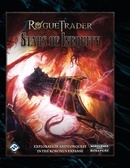



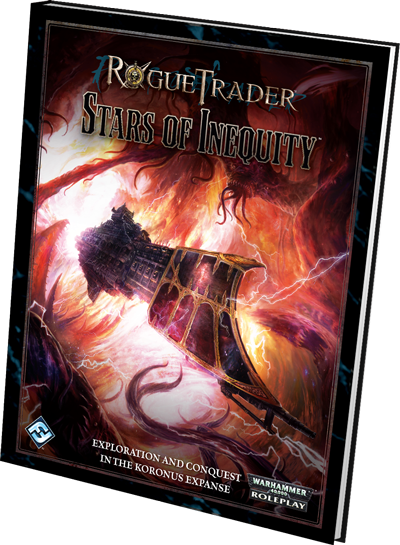

 The most miraculous part of a Rogue Trader's lot in life stems from the ability to travel freely—not just within the bounds of the Imperium of Mankind, but beyond the Emperor's Light as well. The Navis Primer covers the journey through the spiraling delirium of the Warp, and Stars of Inequity is about the destination: the countless worlds of the Koronus Expanse.
The most miraculous part of a Rogue Trader's lot in life stems from the ability to travel freely—not just within the bounds of the Imperium of Mankind, but beyond the Emperor's Light as well. The Navis Primer covers the journey through the spiraling delirium of the Warp, and Stars of Inequity is about the destination: the countless worlds of the Koronus Expanse.


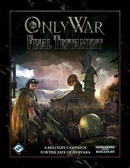








 Now, with the release of Stars of Inequity just a week away, we’re pleased to present a closer look at its engaging World Generator rules.
Now, with the release of Stars of Inequity just a week away, we’re pleased to present a closer look at its engaging World Generator rules.
 Now, with the release of Stars of Inequity just a week away, we’re pleased to present a closer look at its engaging World Generator rules.
Now, with the release of Stars of Inequity just a week away, we’re pleased to present a closer look at its engaging World Generator rules.














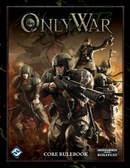





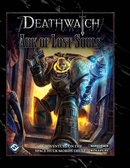

 Across the galaxy, from the Ultima Segmentum to the Halo Stars, few events stand as such stark omens of doom and disaster as the appearance of a Space Hulk. Each bloated mass of debris, voidship wreckage, and lifeless star-stuff meandering through the galaxy spreads a pall of misery and terror in its wake like a ghost ship of ancient Terran legend. Still, the passing of a Space Hulk is met with wild rumors of the archeotech treasures and priceless relics that may lie deep within its twisting corridors and forgotten holds. The chance to uncover such wonders is irresistible to many a treasure-hunter and seeker of secrets, and many have braved the xenos infestations and Warp-born horrors that stalk each Space Hulk for a chance to acquire some lost bit of technology or uncover some invaluable artifact of ages long past.
Across the galaxy, from the Ultima Segmentum to the Halo Stars, few events stand as such stark omens of doom and disaster as the appearance of a Space Hulk. Each bloated mass of debris, voidship wreckage, and lifeless star-stuff meandering through the galaxy spreads a pall of misery and terror in its wake like a ghost ship of ancient Terran legend. Still, the passing of a Space Hulk is met with wild rumors of the archeotech treasures and priceless relics that may lie deep within its twisting corridors and forgotten holds. The chance to uncover such wonders is irresistible to many a treasure-hunter and seeker of secrets, and many have braved the xenos infestations and Warp-born horrors that stalk each Space Hulk for a chance to acquire some lost bit of technology or uncover some invaluable artifact of ages long past. Ark of Lost Souls is filled to bursting with stats and details on monstrous horrors, ancient treasures, unimaginable threats, and endless environments aboard all manner of ships—human and alien alike—trapped within the tenacious bulk of a Space Hulk. Madness, terror, and distorted realities may lie around every corner or behind every door. In a place that is ever-changing and is utterly indefinable, the pervading mood is more akin to a haunted house or insane labyrinth than the simple voidships that comprise its twisted form. The threats are both real and imagined, as scuttling can be heard down each pitch-black corridor and the feeling of a malign presence seeps from the very walls.
Ark of Lost Souls is filled to bursting with stats and details on monstrous horrors, ancient treasures, unimaginable threats, and endless environments aboard all manner of ships—human and alien alike—trapped within the tenacious bulk of a Space Hulk. Madness, terror, and distorted realities may lie around every corner or behind every door. In a place that is ever-changing and is utterly indefinable, the pervading mood is more akin to a haunted house or insane labyrinth than the simple voidships that comprise its twisted form. The threats are both real and imagined, as scuttling can be heard down each pitch-black corridor and the feeling of a malign presence seeps from the very walls.

 Across the galaxy, from the Ultima Segmentum to the Halo Stars, few events stand as such stark omens of doom and disaster as the appearance of a Space Hulk. Each bloated mass of debris, voidship wreckage, and lifeless star-stuff meandering through the galaxy spreads a pall of misery and terror in its wake like a ghost ship of ancient Terran legend. Still, the passing of a Space Hulk is met with wild rumors of the archeotech treasures and priceless relics that may lie deep within its twisting corridors and forgotten holds. The chance to uncover such wonders is irresistible to many a treasure-hunter and seeker of secrets, and many have braved the xenos infestations and Warp-born horrors that stalk each Space Hulk for a chance to acquire some lost bit of technology or uncover some invaluable artifact of ages long past.
Across the galaxy, from the Ultima Segmentum to the Halo Stars, few events stand as such stark omens of doom and disaster as the appearance of a Space Hulk. Each bloated mass of debris, voidship wreckage, and lifeless star-stuff meandering through the galaxy spreads a pall of misery and terror in its wake like a ghost ship of ancient Terran legend. Still, the passing of a Space Hulk is met with wild rumors of the archeotech treasures and priceless relics that may lie deep within its twisting corridors and forgotten holds. The chance to uncover such wonders is irresistible to many a treasure-hunter and seeker of secrets, and many have braved the xenos infestations and Warp-born horrors that stalk each Space Hulk for a chance to acquire some lost bit of technology or uncover some invaluable artifact of ages long past. Ark of Lost Souls is filled to bursting with stats and details on monstrous horrors, ancient treasures, unimaginable threats, and endless environments aboard all manner of ships—human and alien alike—trapped within the tenacious bulk of a Space Hulk. Madness, terror, and distorted realities may lie around every corner or behind every door. In a place that is ever-changing and is utterly indefinable, the pervading mood is more akin to a haunted house or insane labyrinth than the simple voidships that comprise its twisted form. The threats are both real and imagined, as scuttling can be heard down each pitch-black corridor and the feeling of a malign presence seeps from the very walls.
Ark of Lost Souls is filled to bursting with stats and details on monstrous horrors, ancient treasures, unimaginable threats, and endless environments aboard all manner of ships—human and alien alike—trapped within the tenacious bulk of a Space Hulk. Madness, terror, and distorted realities may lie around every corner or behind every door. In a place that is ever-changing and is utterly indefinable, the pervading mood is more akin to a haunted house or insane labyrinth than the simple voidships that comprise its twisted form. The threats are both real and imagined, as scuttling can be heard down each pitch-black corridor and the feeling of a malign presence seeps from the very walls.
 I selected Hervara, a world focused heavily upon mining. This gave me a chance to both further detail the Hervara system as well as an opportunity to explore the planet’s different battlefronts. It also meant that I could create scenes which featured tunnel battles. I think tunnel battles can offer great ambience for an adventure, but they also present a way to isolate a small group from the larger conflict. That seemed like a convenient way to break down the scale of the war, so that a squad of player characters might have to operate without the immediate support of a much larger battle group.
I selected Hervara, a world focused heavily upon mining. This gave me a chance to both further detail the Hervara system as well as an opportunity to explore the planet’s different battlefronts. It also meant that I could create scenes which featured tunnel battles. I think tunnel battles can offer great ambience for an adventure, but they also present a way to isolate a small group from the larger conflict. That seemed like a convenient way to break down the scale of the war, so that a squad of player characters might have to operate without the immediate support of a much larger battle group.

 I selected Hervara, a world focused heavily upon mining. This gave me a chance to both further detail the Hervara system as well as an opportunity to explore the planet’s different battlefronts. It also meant that I could create scenes which featured tunnel battles. I think tunnel battles can offer great ambience for an adventure, but they also present a way to isolate a small group from the larger conflict. That seemed like a convenient way to break down the scale of the war, so that a squad of player characters might have to operate without the immediate support of a much larger battle group.
I selected Hervara, a world focused heavily upon mining. This gave me a chance to both further detail the Hervara system as well as an opportunity to explore the planet’s different battlefronts. It also meant that I could create scenes which featured tunnel battles. I think tunnel battles can offer great ambience for an adventure, but they also present a way to isolate a small group from the larger conflict. That seemed like a convenient way to break down the scale of the war, so that a squad of player characters might have to operate without the immediate support of a much larger battle group.

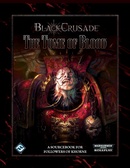




 The Dark Gods of Chaos are beings of incalculable power and insidious influence who reside in the nightmare dimension known as the Realm of Chaos. It is a place where the impossible is routine and insanity is the norm. From within this twisted hellscape, the Ruinous Powers reach into the world of mortals, offering a portion of their power to the living in exchange for their loyalty and obedience. Khorne’s price for strength and power is simply that his followers engage in constant acts of both violence and rage. The Blood God demands death and destruction, mayhem and warfare. He would see his enemies drained of blood and their skulls harvested in brutal conflict, a galaxy aflame with endless war. Are you worthy to stand among his chosen?
The Dark Gods of Chaos are beings of incalculable power and insidious influence who reside in the nightmare dimension known as the Realm of Chaos. It is a place where the impossible is routine and insanity is the norm. From within this twisted hellscape, the Ruinous Powers reach into the world of mortals, offering a portion of their power to the living in exchange for their loyalty and obedience. Khorne’s price for strength and power is simply that his followers engage in constant acts of both violence and rage. The Blood God demands death and destruction, mayhem and warfare. He would see his enemies drained of blood and their skulls harvested in brutal conflict, a galaxy aflame with endless war. Are you worthy to stand among his chosen?



 The Dark Gods of Chaos are beings of incalculable power and insidious influence who reside in the nightmare dimension known as the Realm of Chaos. It is a place where the impossible is routine and insanity is the norm. From within this twisted hellscape, the Ruinous Powers reach into the world of mortals, offering a portion of their power to the living in exchange for their loyalty and obedience. Khorne’s price for strength and power is simply that his followers engage in constant acts of both violence and rage. The Blood God demands death and destruction, mayhem and warfare. He would see his enemies drained of blood and their skulls harvested in brutal conflict, a galaxy aflame with endless war. Are you worthy to stand among his chosen?
The Dark Gods of Chaos are beings of incalculable power and insidious influence who reside in the nightmare dimension known as the Realm of Chaos. It is a place where the impossible is routine and insanity is the norm. From within this twisted hellscape, the Ruinous Powers reach into the world of mortals, offering a portion of their power to the living in exchange for their loyalty and obedience. Khorne’s price for strength and power is simply that his followers engage in constant acts of both violence and rage. The Blood God demands death and destruction, mayhem and warfare. He would see his enemies drained of blood and their skulls harvested in brutal conflict, a galaxy aflame with endless war. Are you worthy to stand among his chosen?
